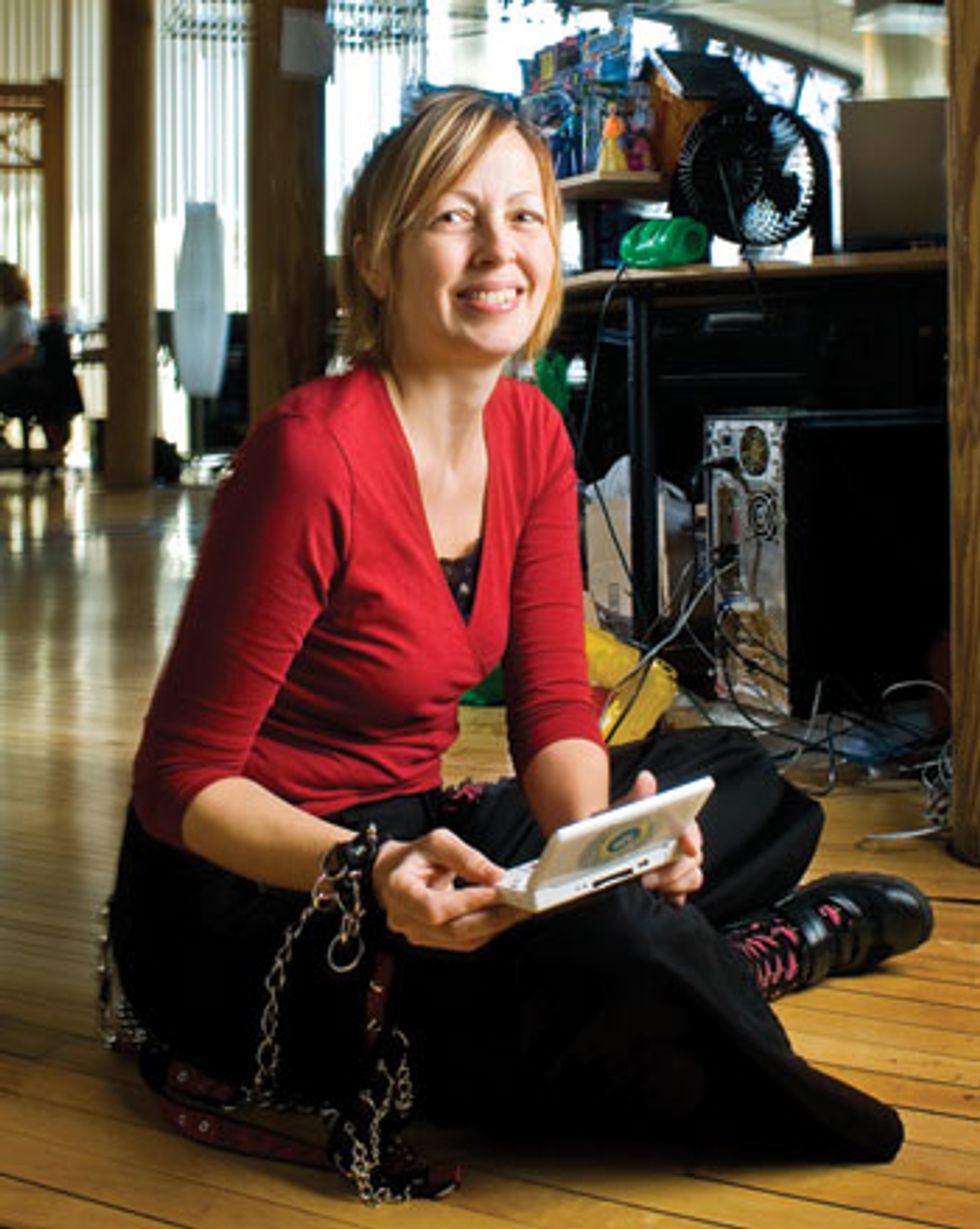These are good times to be an electronic-game developer. With sales hitting US $7 billion per year, the industry is becoming a serious part of what is commonly called ”the media.” Steven Spielberg, Peter Jackson, and other high-profile filmmakers are pursuing game ventures.
Movies based on game franchises top the charts. And there are more platforms for games than ever before: computers, handhelds, and cellphones. But breaking into the industry is a metagame unto itself, and for every thumb jockey who finds a career making games, there are thousands of cube-dwelling Dilberts who dream of a break that never comes.
They have much to learn from Tobi Saulnier, an IEEE member who loved video games from the start but figured she’d better chase a seemingly more practical career. She studied electrical engineering at Rensselaer Polytechnic Institute, in Troy, N.Y., and then worked for a decade at General Electric, where she ended up managing research and development in embedded and distributed systems. But through a bit of social engineering and serendipity, Saulnier was able to leave her safety net behind for the path less traveled—which took her to video-game development. She’s the founder and chief executive of 1st Playable Productions, a video-game developer in Troy. As one of the few engineers, let alone female engineers, to make the leap, she is living proof that creating video games needn’t be a pipe dream.
”I’m very attracted to anything that has a problem that requires creativity to solve,” Saulnier says. ”Sometimes we have problems that are technical. Sometimes we have problems that are aesthetic. Engineering gives you a solid base for this kind of problem solving.”
Video games were hardly on Saulnier’s mind in 1984 when she took her first job, as a contract programmer at GE’s research center. Of the 1500 people on staff, she discovered, more than 100 had doctorates. It didn’t take long for her to realize that her studies had really just begun. ”I was inspired to go get graduate degrees because I felt I had learned nothing,” she says. ”I was surrounded by extremely smart and educated people.”
The birth of her daughter stretched her Ph.D. program at Rensselaer to 10 years, ending in 1995. She then led a small group at GE that explored both the tools of network simulation and the application of the technique to satellite and utility systems. The company has used this technique in products as varied as medical scanners and locomotives.
She relished the challenge of fixing machines, but the grind of working as a cog in one wore her down. ”When you’re at a big company,” she says, ”you have to implement corporate policies—some of which you may not agree with.”
When Saulnier observed some of her colleagues leaving and joining start-ups, she felt the itch to join in. ”They were having all these adventures at small companies,” she recalls. A former colleague suggested she interview at Vicarious Visions, a video-game developer in Troy (which has since moved to Albany, N.Y.), and she quickly found that the video-game business had plenty of room for engineers like her.
”There’s a near endless demand for engineers and game programmers,” says Jason Della Rocca, executive director of the International Game Developers Association (IGDA), in Mount Royal, N.J. ”Nearly every development studio has job openings for engineers.”
Saulnier, an avid violin player, had the kind of creative background that Vicarious Visions preferred, as well as greatly needed patent expertise. In 2000 she signed on as the company’s vice president of product development, organizing multidisciplinary teams of artists, coders, and designers to work on a variety of gaming titles, including children’s games ( Blue’s Clues ) and firstâ''person shooters ( Doom 3 ).
She refined her engineer’s perspective on the science of video games. ”A video game is an embedded system, but with art,” she says, ”plus it has the hard specification that it has to be fun.”
The embedded nature of the hardware, she discovered, provided delectable challenges. New video-game consoles and handheld systems come to market only every four years or so, and that means game developers learn to do the best with the hardware they have. ”As a game developer, you can’t change the hardware,” Saulnier says. ”You must find out what it’s good at and maximize it, very much like working with a satellite system you shoot into space, or a utility system, where approval cycles are long. You have to work with those constraints.”
Getting products to market in good shape can also be a challenge, due to the complications surrounding software updates and patches. Although networking makes it possible to patch a console game, there’s always a potential for disaster. ”You don’t want to make it that easy to patch a system, because an ill-intentioned person can take the system down,” Saulnier says. ”Video-game quality standards are high and extremely tightly managed because the stakes are high.”
In April 2005, after Activision, a video-game publisher in Santa Monica, Calif., bought Vicarious Visions, Saulnier launched her own firm, 1st Playable, which focuses on kids’ games—a natural for her, as she was by then a mother of two. Titles include a spin-off of the Cabbage Patch franchise and a mind bender called Puzzle Quest . She keeps up the energy level by having her staff of 35 share an open space.
She signed on as a member of the IGDA board with a particular interest in encouraging women to join the field. Her choice of position with IGDA reveals her professional pedigree: ”I’m treasurer because I made the mistake of asking about the numbers,” she jokes. ”But for me it’s second nature. I’m an engineer. Numbers are interesting.”
About the Author
Contributing Editor DAVID KUSHNER blogs for Spectrum Online at https://blogs.spectrum.ieee.org/gizmos. In this issue, he also wrote ” Playing Dirty,” about how one man turned virtual dross into gold.
